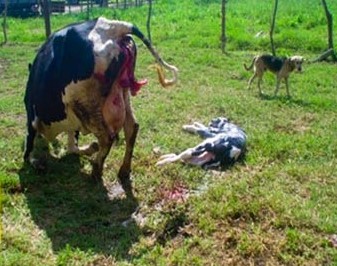Prevalence of Neospora caninum bovine serum antibodies in the Central and Eastern regions of Mexico
Prevalencia de anticuerpos séricos bovinos contra Neospora caninum en las zonas Central y Sur del Golfo de México Seroprevalence of Neospora caninum antibodies in cows

Show authors biography
Objective. To determine the prevalence of antibodies against Neospora caninum (PSA) in beef and dual-purpose cattle from the Central and Southern Gulf of Mexico regions, as well as to evaluate its association with the reproductive status (RS) of the cow (pregnant, not pregnant). Materials and methods. Blood samples were taken from 422 cows. Antibodies were detected with a commercial ELISA kit. PSA was analyzed with a logistic regression model that included state, township nested within state, and ranch nested within township. Results. The states of Tabasco, Puebla and Veracruz had similar PSA (p>0.05). The mean PSA for the three states was 24.0%. The PSA varied from 7.8 to 43.3% across townships. In Puebla, the PSA in cattle from San José Acateno township was more than two-fold greater than that in cattle from Hueytamalco and Nauzontla townships (p<0.05). In Tabasco, Cunduacán, Huimanguillo and Ranchería El Puente townships showed similar (p>0.05) PSA. In Veracruz, cows from Cotaxtla and Medellín de Bravo townships presented higher (p<0.05) PSA than those from San Rafael township. The RS of seropositive females was similar (p>0.05) to that of seronegative females. Conclusions. The three states had similar PSA. All the herds had antibodies against N. caninum, suggesting that this parasite is amply distributed in the three states. In addition, great variation existed among herds and among townships; finally, the presence of N. caninum antibodies was not associated with the RS of the cow.
Article visits 830 | PDF visits























